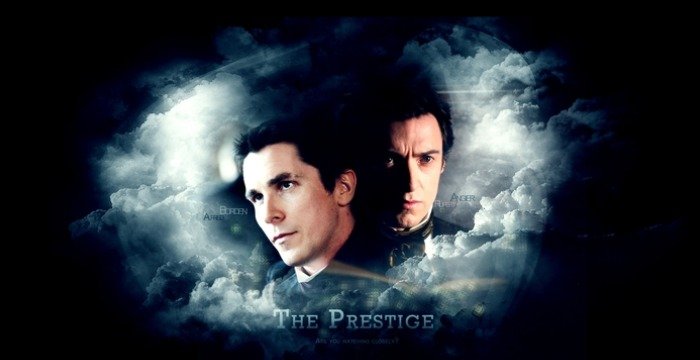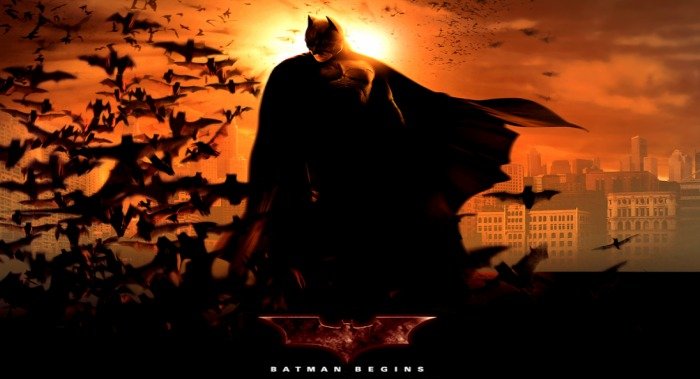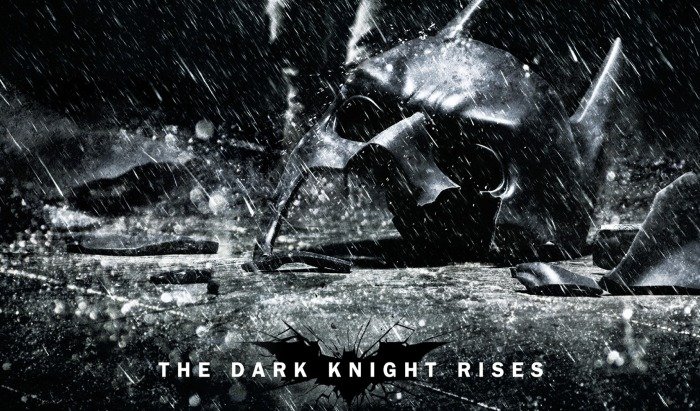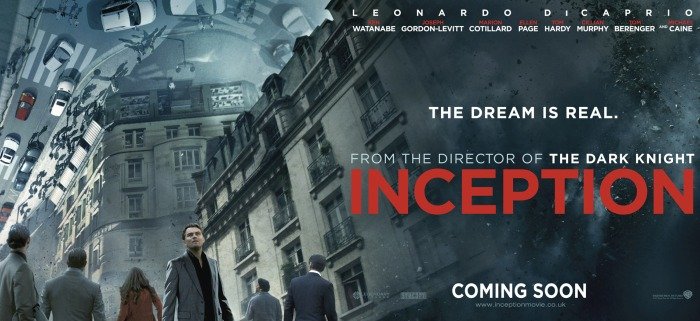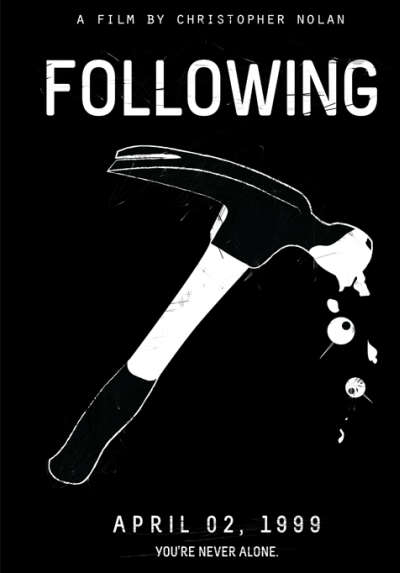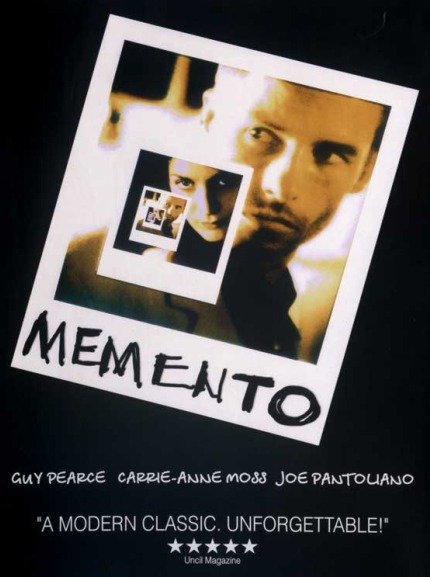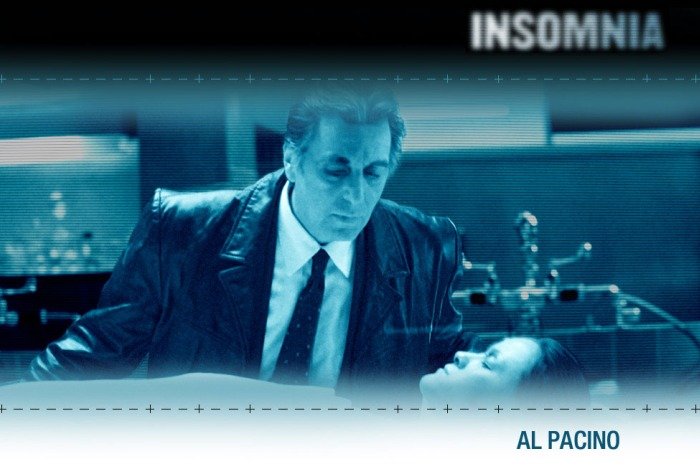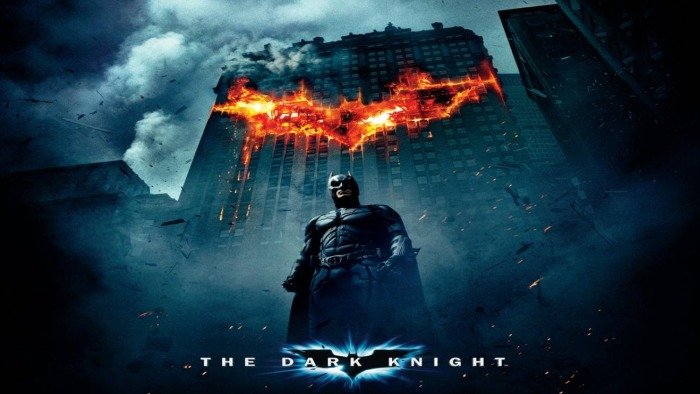Christopher Nolan Films: The Definitive List
As of July 2014 I moved to Japan and while it’s been quite an adventure so far, release dates for the cinemas over here leave something to be desired. Case in point; Christopher Nolan’s Interstellar won’t be released here until the 22nd of November. Seeing as I can’t take part in the hype – so far I’ve read opinions that Interstellar is the best science fiction movie since Kubrick’s 2001; A Space Odyssey while others posit it as the worst film ever made, with the effort required to sit through it being compared to that required to slaughter a small woodland creature. The audience, it would appear, is somewhat polarized. In an effort to get my kicks from a Nolan fix though, I’ve decided to re-watch and rank all of the Christopher Nolan movies made thus far. Who knows, if people feel as strongly about them as they do Interstellar maybe there’ll be a riot! I don’t think I’d mind that. Coming in dead last is…
No. 8 – The Prestige (2006)
The Prestige tells the story of two rival magicians Rober Angier, played by Hugh Jackman, and Alfred Borden, played by Christian Bale, as they vie for illusory supremacy over one another in 19th Century London. The supporting cast includes Michel Caine, Scarlett Johansson, and David Bowie. That’s right; Bowie.
The film takes its stylistic cues from its characters; Nolan here is trying to deceive the audience, lure them to false conclusions, and undermine any established assurances they might have. The resulting film is essentially like a magic trick in so far as it is entertaining but once the mechanics are revealed it does loose some of its splendor.
From the opening the film challenges the viewer to try and figure out exactly what is going on. In the first shot of the film Christian Bale’s character is heard asking “Are you watching closely?” while the viewer is presented with a shot of a seemingly random scene of many, many top hats dumped in a forest. This little prologue would seem to question the seeming irrelevance of minor or random details; the viewer is being asked to discover the devices by which they are being deceived. As such the film sets out to be equally as manipulative as the magicians it portrays using narrative trickery to undermine any sense of authority that the viewer has gained. Characters read journal entries within journal entries only to find out that these journals have been constructed to mislead the magicians as well as the audience. While all of this misdirection is entertaining it does create a film that is a kind of cheap trick in and of itself and the choice to sacrifice emotional resonance in favour of narrative kerfuffle does not stand to it.
The central competition between Jackman and Bale is an interesting one but neither gives a particularly strong performance, much like the rest of the cast, who are mostly charming in their competent acting, but who all fail to give their supporting characters much depth. The character that does stand out as the most emotionally developed is Borden’s wife Sarah played by Rebecca Hall. Much like the audience she too is subject to the trickery of ambitious magicians, which is ultimately too much for her to take. David Bowie gives a commendable performance as Nikola Tesla, lending the genius inventor an air of the otherworldly. Well done David.
Creating a narrative that sets out to deceive from the start means that character development takes a back seat and motivations only become apparent when revealed towards the film’s close. Upon first viewing The Prestige can at times be quite an enthralling film however once the trick has been revealed watching the film becomes more tedious as misdirection and showmanship lose their, for lack of a better word, prestige and become apparently more mechanical.
No. 7 – Batman Begins (2005)
Watching Batman Begins now, the story might seem jaded given the many origin stories which have been produced since its release but in terms of the superhero/comic book adaptation industry which is now fully in motion it’s worth noting that this film changed the way that superhero films are made. The film stars Christian Bale as Bruce Wayne and includes Michael Caine, Liam Neeson, Katie Holmes, Gary Oldman, and Morgan Freeman in supporting roles.
Nolan’s decision to focus on the character of Batman, and to veer away from more stylistic interpretations such as Tim Burton’s Batman of 1989, helps to draw audiences into the film for its examination of Bruce Wayne and the reasons why, and how, he became Batman, placing less emphasis on visual spectacle. The film does not want for cinematic luster but it does utilise more muted tones than its predecessors, and vitally, it grounds itself in the study of its main character.
With a redesign to match the more grounded and relatable tone, some of the possibly more jarring and fantastical features, like the Batmobile, Batcave, and a secret identity, become functional and to some degree reasonable, each holding a place within the story as opposed to being random additions serving to titillate the audience. Like the Bat-nipples of Batman and Robin.
Weaving the origins of Bruce Wayne, the death of his parents, his flight from Gotham, his training, and his eventual emergence as Batman, into a non-linear narrative Nolan helps to keep what has become a very well-known story fresh and exciting. Covering several decades early on, Nolan then sets the final act of the film in a single night, bringing great immediacy to the actions which build to the films climax, while the measured use of CGI in scenes involving character’s hallucinations and their increasing proximity as the film progresses helps to keep the visual landscape of the film engaging.
Clever treatments of time and visual variety aside there is a certain stiffness to the story which is inescapable given its nature. The film suffers from its somewhat narrow focus; it is an origin story and as such the narrative itself is ultimately predictable. Impressive casting helps to broaden the world of the film but certain characters, such as Rachel Dawes, played by Katie Holmes, fail to make an impression, especially beside other actors who utilise their screen time much more effectively, such as Gary Oldman playing Lieutenant James Gordon.
Batman Begins is an engaging take on an old story, which, enjoyably features enough variety to keep audiences engaged, but which is hindered by its nature as a reboot of an all too familiar franchise.
No. 6 – The Dark Knight Rises (2012)
The Dark Knight Rises runs directly from the narrative strands which were left open from its predecessor The Dark Knight, and while still trying to resolve those issues it also incorporates elements from the first installment Batman Begins, trying to draw the franchise to a satisfying conclusion. The film makes use of its existing cast seen in previous installments while also welcoming Anne Hathaway, Tom Hardy, Marion Cotillard, and Joseph Gordon-Levitt to the roster. As the crowning conclusion to The Dark Knight Trilogy this film is weighed down by the many different narrative elements which it must resolve which hinders the film from standing independently and also means there’s less time given to develop new characters which are introduced solely in this film.
Tom Hardy’s charismatic performance as Bane does help to establish the film as a worthy installment in and of itself. Despite his face being covered Hardy manages to convey scene stealing intensity with a look. His performance is, however, hampered by the redubbing of his lines, which took place post-production to give them greater clarity. This unfortunately lends a jarring quality to his dialogue which does not sync entirely with the rest of the audio.
The stretching of time into months as an imprisoned Batman recovers from his broken back and Gotham disintegrates into chaos feels rushed and there is little to no pay off in terms of the journey which Batman makes from the prison back to Gotham. Audiences are denied a meaningful conclusion to the events which take place within the film as the greater arcs which have spanned the entire trilogy take precedent. Cleverly written scenes do help Gordon-Levitt’s character to receive some depth as the films conclusion throws his character into relief.
The film does have many fine moments, mostly when not trying to tie up loose ends, such as Bane and Batman’s first confrontation. Batman’s effective combat is usually conveyed through editing and shot composition, with the viewer occupying the perspective of the thug; Batman is only ever partially viewed and appears into shot suddenly. In facing Bane, however, Batman is left powerless within shots which capture his entire frame, which is dwarfed in comparison his opponent’s musculature. The sequence is granted an eerie silence lacking any of Zimmer’s score and thus the protagonist is entirely abandoned to the machinations of his enemy. Such thrilling moments are sporadic at best, however, and do not form any kind of cohesive center which the film lacks.
While I think I’ll always find this film wildly entertaining as a conclusion to The Dark Knight Trilogy, standing on its own beside the other films Nolan has made, it fails to make a comparable impact. There are noticeable moments which rouse fervor but overall the film is hindered by its obligations as a concluding chapter.
No. 5 – Inception (2010)
The majority of Nolan’s work has been in adapting other texts to film. This is the case with The Prestige, based on a novel of the same name, Insomnia, an adaptation of a Norwegian film from 1997, The Dark Knight Trilogy, based on the Batman mythos, and even Memento, which was an adaptation of a short story written by his brother. Inception stands as Nolan’s first film to be comprised of solely his own material and it is indeed an original film.
An all-star cast led by Leonardo DiCaprio also features Ellen Page, Joseph Gordon-Levitt, Marion Cotillard, Ken Watanabe, Tom Hardy, Dileep Rao, Cillian Murphy, and Michael Caine, which is quite a list of names. The film revolves around Dominik Cobb (DiCaprio) in his attempt to implant an idea into the subconscious of a corporate heir at the behest of an equally shady corporate benefactor. The film is a sci-fi bank heist thriller cum noir-ish redemption story.
Inception does not lack for originality in any degree. The concepts which bolster the plot of the film are fascinating in and of themselves and allow Nolan room to experiment with depictions of time and gravity in very interesting ways. The treatment of time as one dream sequence is stretched out due to the subjective comprehension of time within dreams helps to build tension as Cobb and his team burrow deeper and deeper into the dreamscape. The scenes featuring Gordon-Levitt in an environment with distorted gravity are excellently executed and riveting to watch. Nolan manages to meet audience expectation by providing action set pieces tightly knit around conceptual themes, using practical effects skillfully enough to make the impossible look alarmingly plausible.
Hans Zimmer’s work on the score helps the film inordinately as his themes cue the audience for scenes of emotional importance while at other times reach dizzying heights of grandeur and volume reflecting the lofty ideas the film is trying to convey. Nolan also helps to diversify the aural landscape of the film with the inclusion of Édith Piaf’s “Non, je ne regrette rien” as a plot device, some sections of which Zimmer masterfully worked into the score.
While sequences where the Paris sky line folds in on itself or entire skylines crumble into the sea are visually created with a deft hand the greater themes and concepts of the film require more rigorous efforts in order to implant them in the audience’s mind. Nolan relies mostly on exposition to serve his purpose here which can at times be tiresome. The script relies heavily on DiCaprio’s performance to anchor the film emotionally, which it does, however, the preoccupation with explaining the science behind the film, the subjective dilation of time within dreams, the role of the subconscious in the dreamer and so on, leaves little room for developing the other characters. The talented cast makes the most of the time they’re allowed but their possible depth is sacrificed. In particular the antagonistic relationship between Hardy and Gordon-Levitt’s characters feels underdeveloped and given more screen time could have been better realised.
No doubt Inception is a film which is impressive both conceptually and visually but it does unfortunately suffer from the weightiness of these concepts and can be weighed down in trying to explain them.
No. 4 – Following (1998)
Following is Nolan’s first, and probably least-known, feature-length production. It features Jeremy Theobald, Alex Haw, and Lucy Russell and tells the story of how a young man, played by Theobald, becomes embroiled in a life of crime.
While some of Nolan’s films may lose their immediacy in juggling too many narrative elements or in trying to fully realise weighty science fiction concepts, this film does not suffer from a lack of focus or drive. The story is simple but told in such a way as to garner as much dramatic tension as possible, opening with what will later be revealed as the closing scene, featuring a voice over by the central protagonist. The narrative jumps between future and present, with each being conveyed using simple visual indicators such as the length of a character’s hair, and from that the viewer is able to piece together where they are in the time line of the events. In fact trying to figure out and follow the main character, credited simply as The Young Man, in his transformation from long haired grungy writer to clean shaven con man helps to distract from the budget constraints of the film. A small cast of characters, as well as the close-quartered nature of most scenes, shot indoors in private residences, help to contain the film and drive the tension of its plot. Shot in monochrome the viewer is also free from the distractions of colour, another element which helps the film to hone in on the characters and the story in which they have become embroiled.
While keenly shot and cleverly focused the film can at times be stifling. The acting while naturalistic isn’t totally engaging and at times certain lines of dialogue and gestures are lost in translation and one can’t help but feel that others more adept in their trade would have been able to hit the mark with the same material. Indeed at some times those qualities which make Following so exhilarating are also qualities which do not stand to it. Its budgeted nature, the apparent economy with which it was created, makes the film sharp and driven but also shows it up at times as a poorly financed labour of love, which lacks the means to fully realise the vision of its ideas in the same way that a more expensive production might have.
No. 3 – Memento (2000)
Memento is based around a simple story but what makes the film so enthralling is the manner in which that story is told. Leonard Shelby, played by Guy Pierce, is a man who suffers from severe short term memory loss. Able to remember everything up until the assault which caused his condition and also resulted in his wife’s death, the film depicts Shelby’s efforts at seeking vengeance against the man who killed his wife. Nolan chooses to depict the sequence of the events in reverse, meaning that the viewer sees the ending of the story first and works their way backwards through the story. The effect is jarring but also thrilling as the viewer immediately picks up the cause of Shelby who must try and figure out what has happened in the minutes prior to the beginning of nearly every scene.
Presenting the conclusion at the beginning of the film Nolan still manages to create suspense and tension in detailing the mystery which surrounds the events which led up beginning of the film. Carrie-Anne Moss and Joe Pantoliano also play alongside Pierce in understated performances as characters which are manipulative and unlikeable, and help to create the morality of the film as one which is decidedly dank and grey.
The story is also presented in another series of scenes which run chronologically forward in counterpoint to the main body of the film which runs backwards. This narrative is shown in black and white and features Shelby telling a story which informs, reflects, and in certain ways creates his own. The two narrative streams eventually meet and combine at the culmination of the film’s events. A twist ending at end of the film (the beginning of the story) which informs everything that has happened since, or will happen after, establishes dramatic significance as the film’s conclusion and throws all of Shelby’s actions into relief.
No. 2 – Insomnia (2002)
Insomnia has the makings of a run of the mill detective/police procedural but Nolan takes the simple premise and turns into a stylish study of what is right and wrong and how under certain pressures and stresses individuals can lose sight of the boundaries between the two. The film stars Al Pacino as Detective Will Dormer, alongside Hilary Swank and Martin Donovan, with Robin Williams cast as the film’s antagonist and killer Walter Finch.
In a film where the lines between reality and hallucination blur constantly and the morality of characters is under scrutiny the casting of Pacino and Williams against type is a masterstroke. Pacino brings a dogged intensity to the character of Dormer as he falls victim to the endless daylight of the Alaskan landscape. As Dormers objectivity is diminished Williams, as antagonist, steps into shot playing the together, focused, and pleasant to Pacino’s disheveled, frenzied, and sharp. Known for his usually energetic performances Williams is scene stealing, playing the role with a disquieting stillness which is both mundane and off putting and comes as a welcome relief to the portrayal of killer as eccentric madman. Williams, as always, is likeable while Pacino exudes the villainous and these qualities, inherent in the actors before they step foot into scene, help to implicitly challenge the audience’s perception of who is the villain and who is the hero. Swank too is on form bringing a sense of depth and nuance to a character that in less adept hands might have fallen into cliché.
The film has a wonderful sense of location set in Alaska and this distinct sense of place is used to dislodge Dormer from any sense of comfort he might try and find. In thrilling chase scenes the camera is constantly directed towards Dormer’s feet as he scrambles over slippery rocks and tries to balance between floating logs, signifying Dormer’s lack of grip on reality, that he could fall to his doom, be it moral or physical, at any minute. The effects of Dormer’s insomnia are reflected in the choices of the character but Nolan also grants the viewer the perspective of the afflicted as seemingly innocuous objects, like coffee machines and clocks, are drawn sharply in and out of focus, and harshly cut together, while the usually unnoticeable sounds of their mechanics momentarily screech, piercing the otherwise uniform aural texture of the film. These effects serve to give the film an almost surreal and dreamlike quality at times, as the portrayal of Dormer’s psyche takes precedence over any characters’ or filmmakers’ attempts to bring objectivity or order to the events of the film, giving the classically modernist epistemological detective story a nice ontological twist.
Insomnia is no doubt an excellent film. It’s blending of the subjective perspective prone to surreal hallucination with the usually objective role of the detective makes for a thrilling examination of morality and characters under great psychological stress. Perhaps its most striking elements are in its ability to create the seemingly mundane as surreal while remaining grounded in its study of character motivation and an examination of subjective morality.
No. 1 – The Dark Knight (2008)
Sequels can prove to be tricky territory to negotiate. They can allow for the development of ideas which have been established by their predecessors but also run the risk of running thin if these ideas have already been exhausted and taken to their natural and logical conclusions. The Dark Knight takes off where Batman Begins began but rather than be hemmed in by its place within the franchise, this sequel manages to surpass its possible limitations and become a film that combines the best of artistic expression and industry expectation.
Christian Bale returns as Bruce Wayne, along with Michael Caine, Morgan Freeman, and Gray Oldman. Maggie Gyllenhaal replaces Katie Holmes in the role of Rachel Dawes, while Aaron Eckhart and Heath Ledger are also added to the billing. The returning supporting cast bring all of their charisma to the second installment of Nolan’s trilogy while the addition of Gyllenhall adds new depth to the character of Dawes who ultimately receives greater narrative significance. Eckhart too does a fine job of establishing the traits in Dent which will later develop to create the villain Two-Face so that his transformation appears to be a natural progression of the character as opposed to forced cameo. Scenes where Dent attacks an aggressive witness in court, or abducts an inmate of Arkham Asylum are excellently performed by Eckhart who plays it as a man who is slowly being broken down by the greater powers which surround him, as opposed to an inherently nefarious villain.
Ledger gives a career-defining performance as the Joker. He is in equal parts disgusting and mesmerizing, capturing the appeal of a character that is attractive due to the revulsion that his actions incite. Nolan’s choice to forego the inclusion of a decisive backstory for the character serves well as it places the narrative arc of the film on both Wayne and Dent who are relatable, if not comparatively humane, characters. The lack of exposition concerning the Joker allows the character to freely wreak havoc in Gotham; from the opening sequences we see him at work propelled by the oddball energy of Ledger’s performance and this carries on throughout the film. Batman’s complex emotional struggle with his role as a necessary evil as opposed to ultimate savior of Gotham and his romantic estrangement from Dawes are exquisitely counterpointed by the Joker’s apparent simplicity. Ledger’s performance is loud, garish, and eccentric which is all necessary seen as the character lacks an origin story and, as such, has to be based entirely on the performance. Ideas like having the Joker dress up as a nurse which would appear to be horridly out of place in the world of the films appear legitimate thanks to the creepy reality which Ledger bring to the character and adds an element of the cross dressing, costume based antics which the Batman mythos is so well known for.
The film’s central examination of the characters of Batman and the Joker is as elegant as it is complex as parallels are drawn between a pair which share many similarities but are so obviously different. Nolan’s choice to base the film in its examination of the character of Bruce Wayne continues to impress. This depiction of Batman paved the way for a more grounded depiction of the superhero, which many have mistakenly associated with grit and darkness, whatever those two things are, thanks to its attention to character development.
Gotham is expanded, as are its inhabitants, the gangsters, executives, and police, and there is a much greater sense of place, which is primarily thanks to location shooting in Chicago. The story is told in a chronologically linear narrative, with any necessary exposition being utilized for characterization, in the case of the Joker, which lends the events of the film immediacy as things go from bad to worse. Nolan does not sacrifice narrative complexity however with the plot being driven by the intentions of the characters which are often hidden from the audience and which when revealed and realized can instantly change the status quo, like the staged death of Gordon or the Joker’s plan to have himself arrested. All of this culminates to produce a film that is entertaining but one that does not sacrifice emotional depth in order to achieve its thrills.
The film’s resolution is flawed in its lack of finality but that does not make it any less satisfying for the viewer as audiences are left with an open ending which presents the new status quo which the film’s events have led to. In this way the film does not pander to industry norms whereby a third instalment would be expected and hinted at and so the film is able to stand on its own, with its characters and themes expressed and taken to their dramatic zenith.

